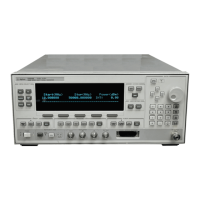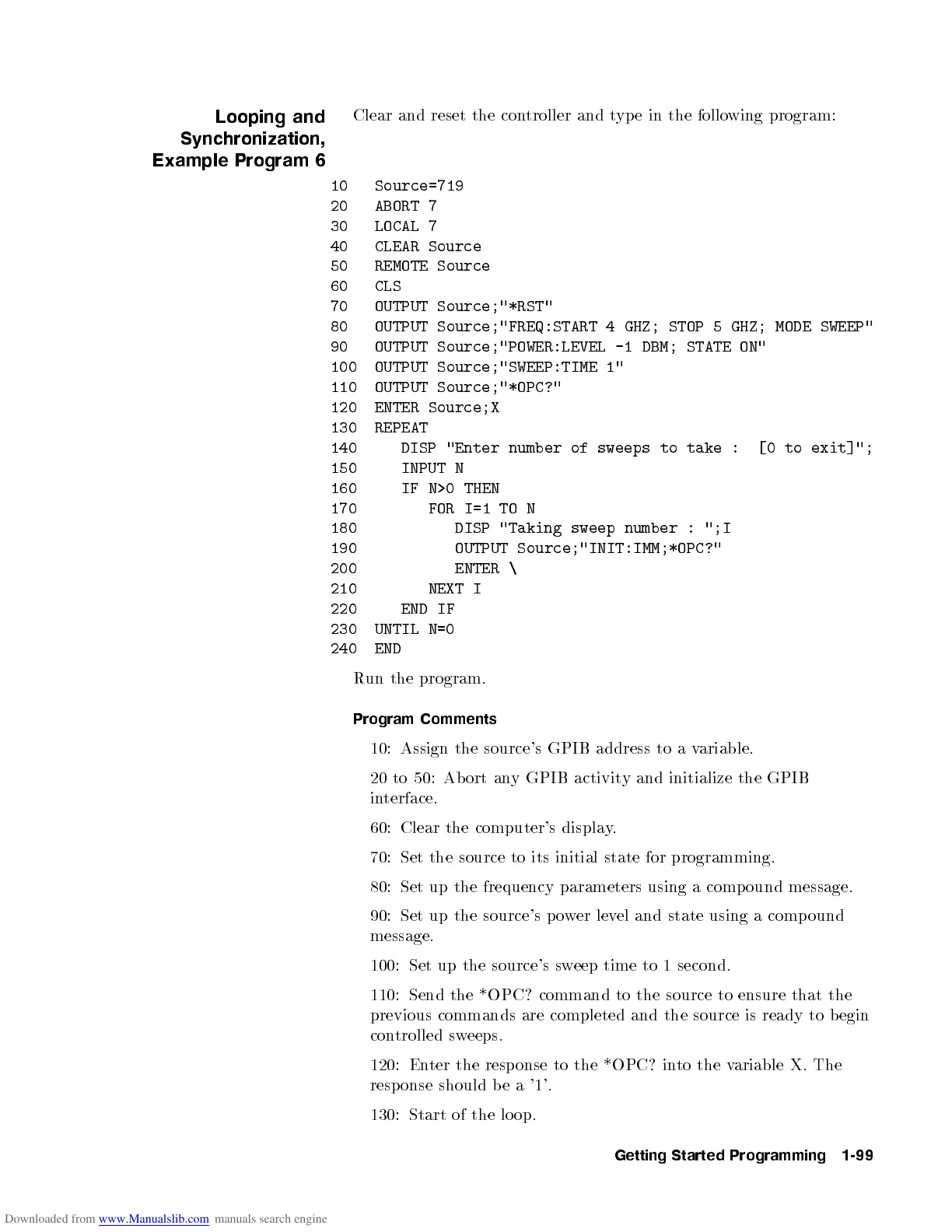Looping and
Synchronization,
Example Program 6
Clear and reset the controller and type in the following program:
10 Source=719
20 ABORT 7
30 LOCAL 7
40 CLEAR Source
50 REMOTE Source
60 CLS
70 OUTPUT Source;"*RST"
80 OUTPUT Source;"FREQ:START 4 GHZ; STOP 5 GHZ; MODE SWEEP"
90 OUTPUT Source;"POWER:LEVEL -1 DBM; STATE ON"
100 OUTPUT Source;"SWEEP:TIME 1"
110 OUTPUT Source;"*OPC?"
120 ENTER Source;X
130 REPEAT
140 DISP "Enter number of sweeps to take : [0 to exit]";
150 INPUT N
160 IF N>0 THEN
170 FOR I=1 TO N
180 DISP "Taking sweep number : ";I
190 OUTPUT Source;"INIT:IMM;*OPC?"
200 ENTER \
210 NEXT I
220 END IF
230 UNTIL N=0
240 END
Run the program.
Program Comments
10: Assign the source's GPIB address to a v
ariable.
20 to 50: Ab ort any GPIB activity and initialize the GPIB
interface.
60: Clear the computer's display.
70: Set the source to its initial state for programming.
80: Set up the frequency parameters using a comp ound message.
90: Set up the source's power level and state using a compound
message.
100: Set up the source's sweep time to 1 second.
110: Send the *OPC? command to the source to ensure that the
previous commands are completed and the source is ready to begin
controlled sweeps.
120: Enter the resp onse to the *OPC? into the variable X. The
response should be a '1'.
130: Start of the lo op.
Getting Started Programming 1-99

